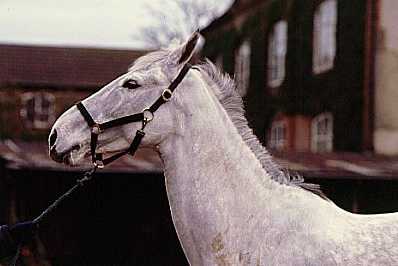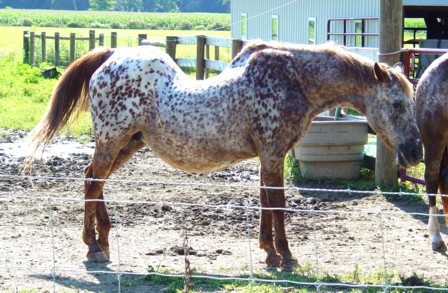Saddle shops see you coming. I swear they do. If it has the word ‘horse’ in it, expect another zero at the end of the price tag. The funny thing is that you don’t actually need that much gear to work with a horse safely. In addition, you can source a lot of things from online retailers (cheaper, more competitive pricing), online outlets (again, cheaper), and even local grocery shops (especially for basic medical supplies).
For example, a lot of my gear has been purchased on sale from local tack shops (keep an eye out for special deals) and http://horsegearoutlet.com/
Whenever I go up to the stables to work with a horse (not mine), I always bring the following grooming items:
1. Body Brush: Your basic, go-to cleaning brush. If the filth won’t come off with a body brush, then your first stop should be a bath, not to ride.
2. Hoof Pick: Essential equine maintenance before and after riding is to clean out and check the feet.
3. Sweat Scraper: Why does everyone seem to only have a broken or wonky scraper? I bring my own in the name of my sanity.
4. Comb: If used gently, can be a valuable tool for cleaning as well as detangling and checking for bot eggs/lice etc.
I have noticed that I seem to clean my gear more frequently than the average person. As a result, I much prefer to bring my own brushes (washed between use on different horses, in case of skin complaints and cross-contamination). All of these fit into a canvas shopping bag along with my immediate-use/really cheap medical kit. This contains:
1. 2 rolls of Vetwrap sticky gauze: Immediate band-aid required? Stick on horse and call for back-up! (vet)
2. One bottle of Betadine antiseptic: Don’t mess around with antiseptic. Buy the proper stuff.
3. One tub of Epsom Salts: Also known as magnesium sulphate, this is a good, cheap all-rounder product to keep with you. Can be added to wet feed for relief of gut pain, added to water and used to soak feet to draw out heat/help rupture abscesses, among many other uses. Worth having a google to find out more.
4. One packet of make-up pads: Cleaning out wounds should be done with disposable products, and these pads are also easy to use, store and dispose of, don’t disintegrate under hot water, and can be used to apply creams/ointments.
5. One bottle of Aloe Vera gel: Good for soothing skin irritations and burns, as well as promoting healing.
6. One tub of Pawpaw ointment: Works like Aloe Vera gel, but stickier and may work better on different areas of the horse as a result.
7. One pair of scissors: Maybe two. These always seem to get pinched.
8. One box of camomile tea (seriously): Make tea for a horse with a sore throat or cough. Add honey for extra effect. I’m not joking. It works really well.
9. Kitchen sponges: Smaller and easier to use than the massive sponges usually sold at horse shops. Scouring sides can be used for cleaning out hooves, softer sponges can be used for nose, eyes, dock and wounds. Sold in bulk packs and easily disposed after intensive use. Also colour-coded for where they can be used!
There’s a story behind this particular medical kit. Firstly, I don’t currently own a horse, and the horses with whom I work have a range of medical requirements, varying from owner to owner. The items I carry are therefore very neutral, inexpensive products that are 1) Unlikely to cause controversy if I give them to the horse and tell the owner, (2) Unlikely to provoke an allergic reaction, (3) Cheap and easy to acquire, replace, and store, (4) Don’t expire quickly. 7 out of 9 of these items all come from the local grocery store.
Horses are not cheap, but these are a few things that I’ve found which don’t have to cost a fortune, but still keep you out of trouble…



